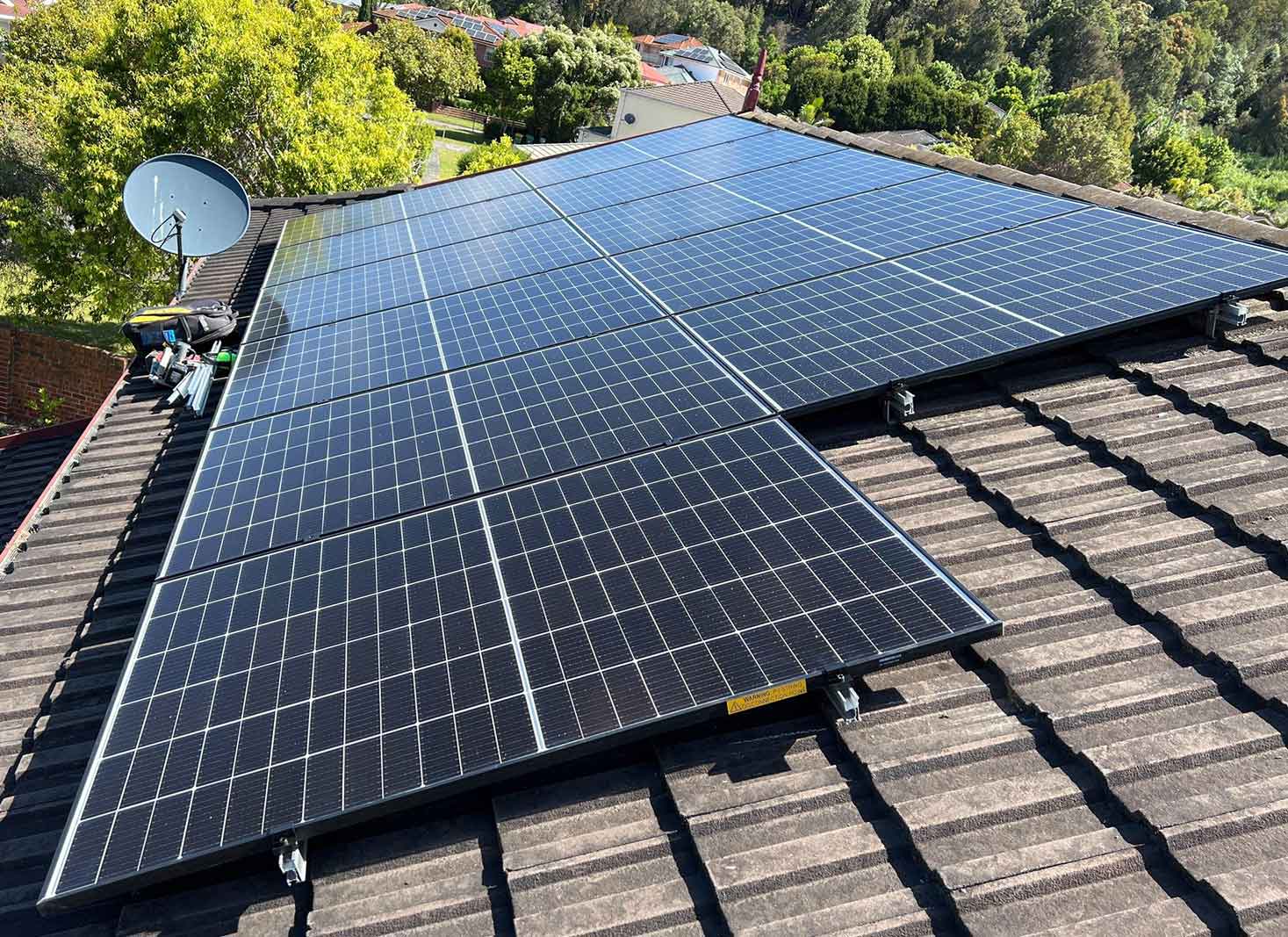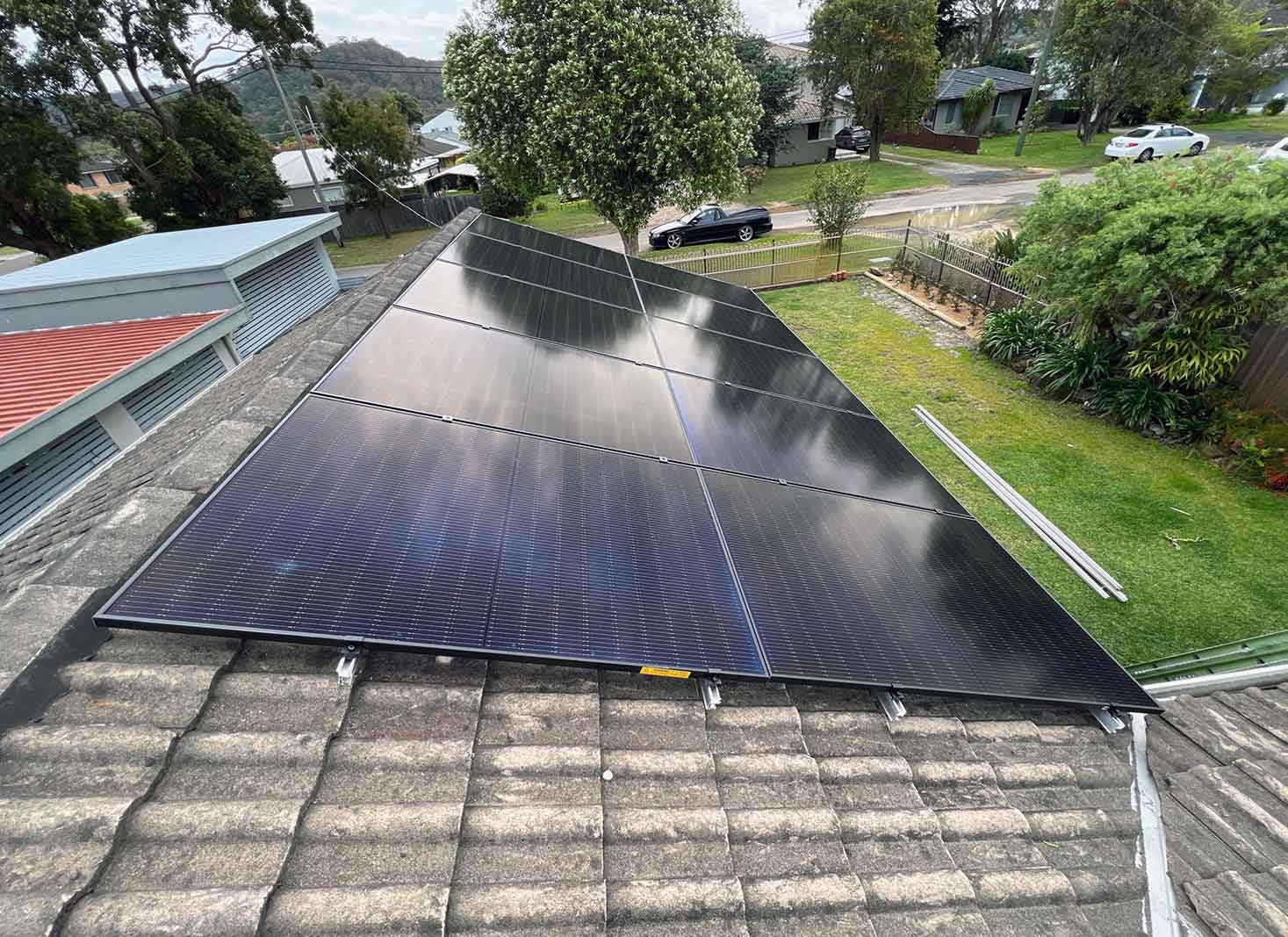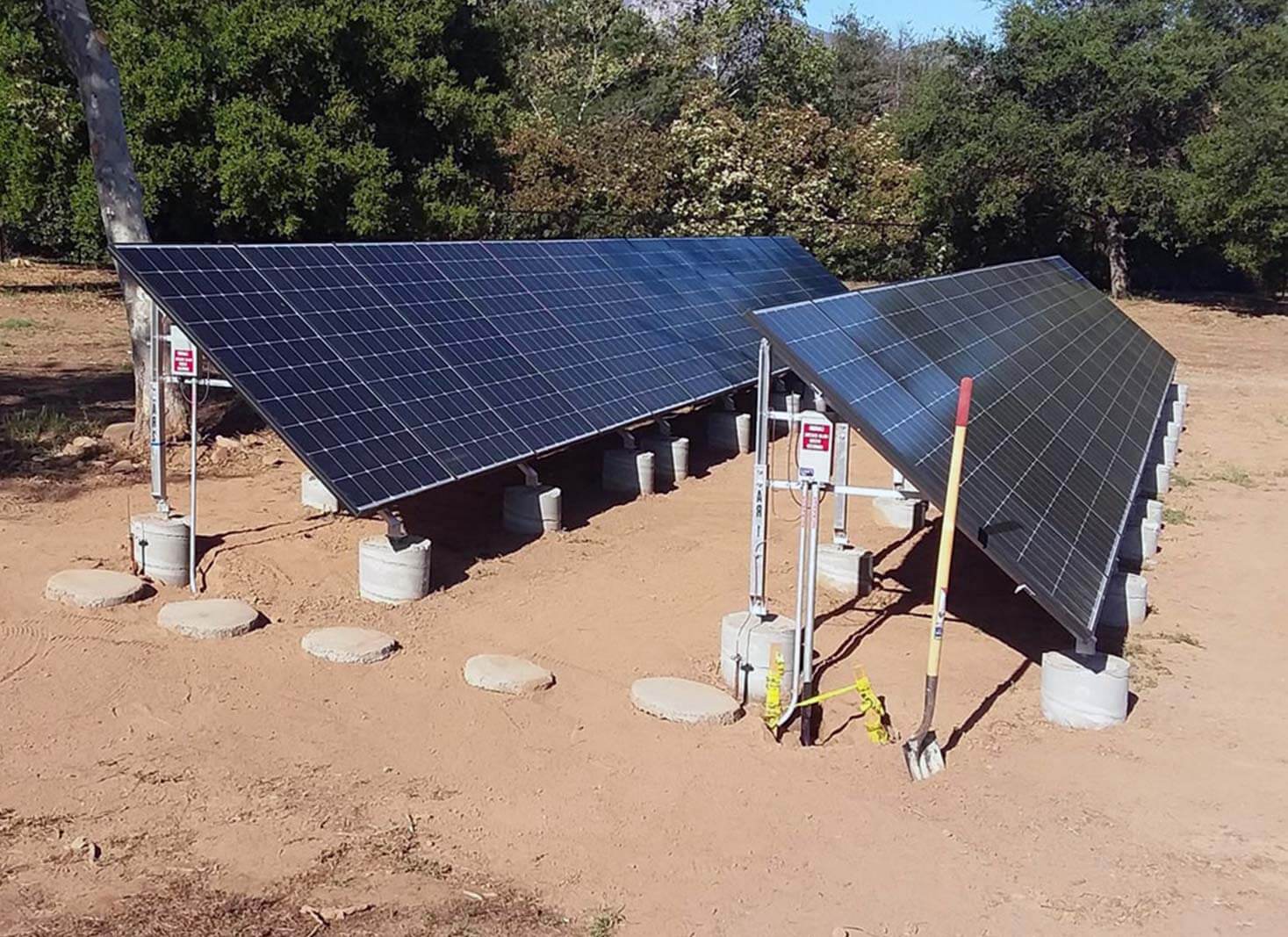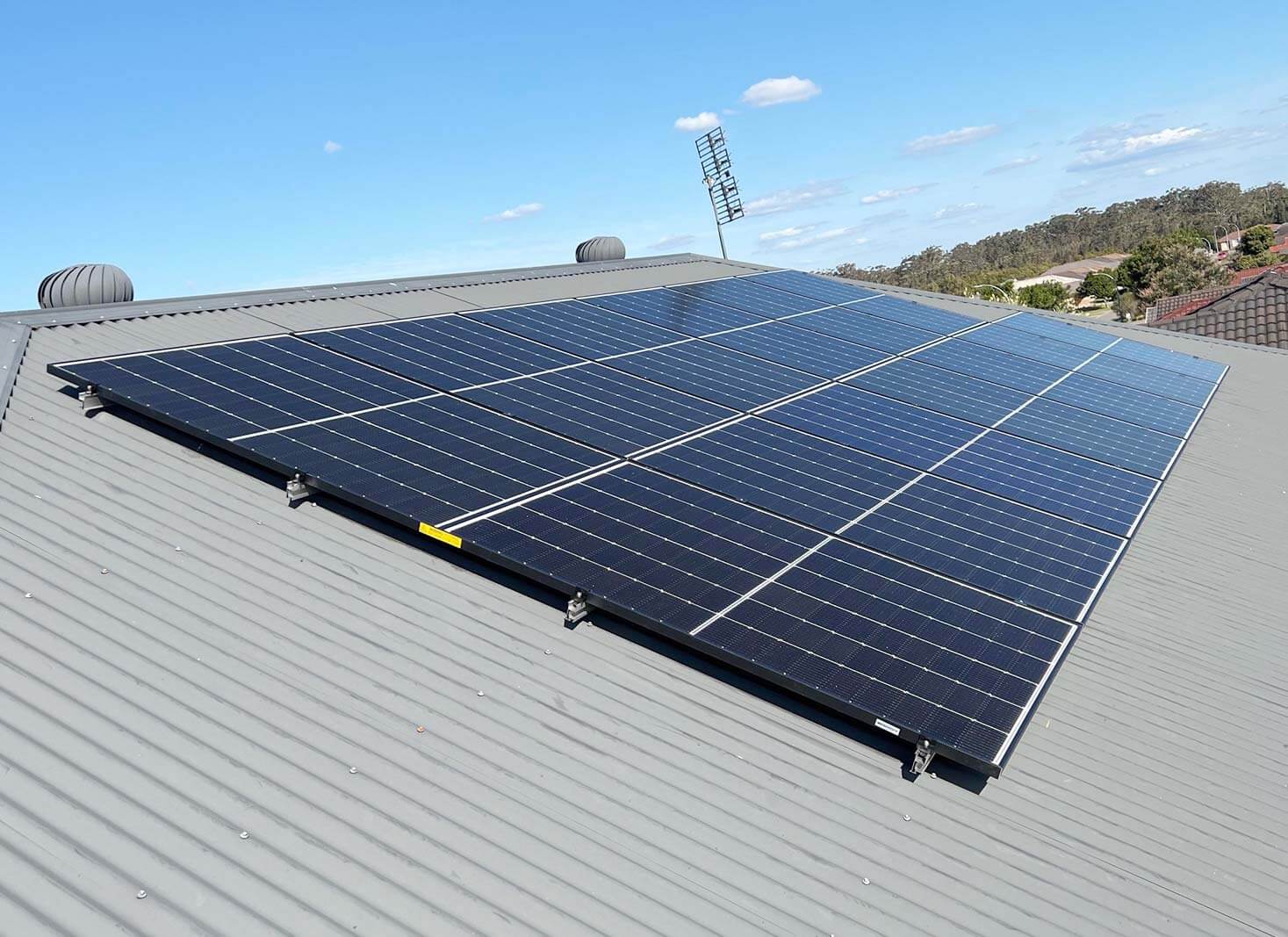9.9 kW Solar System: Cost, Rebates & Outputs
Has the cost of your electricity bills begun to really impact your wallet, leading you to consider installing a solar system to reduce costs and decrease your environmental impact?
A 9.9kW system may be the perfect fit as it’s ideal for a large 5 bedroom home with more than 4 people.
Table of Contents
ToggleShort summary
- A 9.9 kW solar PV system costs about $10,578 and qualifies for an STC rebate of $3,272.
- A 9.9 kW solar system can generate up to 33 kWh to 38 kWh of power daily, requiring 34–58 m2 of roof space.
- Evaluating electricity bills and consulting experts can help in assessing suitability for the system, which offers potential savings of $700–$900 per bill with favourable Feed-in Tariff agreements.
- Choosing quality components such as high-efficiency monocrystalline panels from brands like SunPower and LG, along with an inverter from a reputable manufacturer, is essential for optimal performance and ROI.
How much does a 9.9 kW solar system cost?
The average cost for a 9.9 kW solar system is $8,219, rebate and GST included. The cost can go as low as $10,020 for cheaper panels, but a top-quality system can cost upwards of $11,057.
The exact cost you will pay for your system will depend on its quality, brand, and location. Some regions will have lower prices than others because of differences in climate.
The table below shows the estimated cost of a 9.9 kW solar system in different locations in Australia.
| STC zone | City | Average cost (rebate and GST included) |
|---|---|---|
| 1 | Townsville, Darwin | $10,020 |
| 2 | Alice Springs | $10,219 |
| 3 | Perth, Canberra, Adelaide, Brisbane, Sydney | $10,578 |
| 4 | Melbourne | $11,057 |
When considering the cost of a 9.9 kW solar system, installation charges and other essential components such as panels and an inverter should be factored in. Investing in good-quality panels is essential if you want your investment to last and perform well over time.

Government rebates and incentives for a 9.9 kW solar system
9.9 kW systems can be made more affordable with federal or state government rebates. While most states get their solar rebates from the federal government, there are state governments like Victoria that provide incentives to lower the cost of solar power systems for their residents.
A 9.9 kW solar system qualifies for a rebate of approximately $3,272. The exact rebate varies widely depending on where you live in Australia, or, in simple terms, your STC zone. People living in Zone 1 usually get higher rebates because they receive more solar radiation than people in other zones. Zone 4 gets the least rebate.
The following table shows the amount of solar rebate you can get for your 9.9 kW solar system, depending on your STC zone.
| STC zone | City | STC Rating | Rebate Amount |
|---|---|---|---|
| 1 | Townsville, Darwin | 1.622 | $3,830 |
| 2 | Alice Springs | 1.536 | $3,631 |
| 3 | Perth, Canberra, Adelaide, Brisbane, Sydney | 1.382 | $3,272 |
| 4 | Melbourne | 1.185 | $2,793 |
Note: The current STC price stands at $39.90
Learn more about solar STCs here.
Understanding the 9.9kW solar system
This 9.9 kW solar system is an incredible renewable energy source, capable of generating ample amounts of electricity that could be used for homes and businesses with large power needs.
How much energy does a 9.9 kW solar system generate per day?
An average 9.9 kW solar system can produce up to 33kWh to 38 kWh of energy daily when connected with 27–33 panels and an 8 kW or 10 kW power inverter.
There are, however, various factors that may affect the output of this system. These include:
- Placement and angle of panels
- Shading
- Location and climate conditions
- Efficiency of the solar panels
- Roof orientation and pitch
- Type of inverter used
To maximise its efficiency potential, it is advised to collaborate with experienced installation experts who know how to optimise the design for any given environment or property type.
The table below shows how much a 9.9 kW solar system can generate in different regions in Australia.

9.9 kW solar system output in major cities in Australia
| City/State | Daily Power Production (kWh) | Annual Power Production (kWh) |
|---|---|---|
| Brisbane, QLD | 35 | 12,775 |
| Sydney, NSW | 32 | 11,680 |
| Perth, WA | 38 | 13,870 |
| Melbourne, VIC | 31 | 11,315 |
| Adelaide, SA | 35 | 12,775 |
| Hobart, TAS | 30 | 10,950 |
| Canberra, ACT | 36 | 13,140 |
| Darwin, NT | 38 | 13,870 |
How many solar panels do I need for a 9.9 kW solar system?
A 9.9 kW solar power system contains 27 to 33 panels depending on the size or wattage of the panels. For instance, you can use 27 370-watt solar panels or 33 300W solar panels.
Formula:
9,900 Watts / 270W (panel size) = 27 panels
9,900 Watts / 300W (panel size) = 33 panels
Here are common solar panel sizes that can make up a 9.9 kW solar system:
- 300W x 33 (solar panels) = 9.9 kW
- 330W x 30 (solar panels) = 9.9 kW
- 370W x 27 (solar panels) = 9.99 kW
- 450W x 22 (solar panels) = 9.9 kW
- 550W x 18 (solar panels) = 9.9 kW
Roof space requirements for a 9.9 kW solar system
A 9.9 kW solar system will require about 58 square metres of roof space, but the exact space will depend on the size and wattage of the panels. Typically, solar panels measure about 1.6m x 1.0 m (1.6 m2) or 1.7m x 1.0m (1.7 m2). So, the ideal roof space for a 9.9 solar system with 300W solar panels will be:
1.6 x 33 300-watt panels = 52.8 m2 of roof space
1.7 x 33 300-watt panels = 56.1 m2 of roof space
Higher-efficiency panels like the 550W ones will require less roof space, about 30.6 square metres.
It is imperative to consult qualified solar installers to help determine whether such a powerful setup would suit your property’s specific requirements.
Assessing suitability for a 9.9kW Solar System

Who are the ideal users of a 9.9 kW solar system?
A 9.9 kW set-up could work well for large 5-bedroom residential homes with more than 4 people or small-scale commercial projects like business offices with high power consumption demands.
Therefore, if you have huge electricity requirements and an electricity bill of approximately $450 to $600, a 9.9 kW solar PV system could be an excellent choice.
What can a 9.9 kW solar system run?
A 9.9 kW solar system can run a large house with multiple electrical appliances such as:
- Reverse-cycle air conditioner
- Dishwasher
- Televisions
- Refrigerators
- Laptops
- Washer and dryer
- Swimming pool pump
Evaluating your energy consumption habits
To get the most out of a 9.9 kW solar installation, it’s crucial to audit your electricity consumption habits and figure out activities that take up huge amounts of energy. Taking advantage of this renewable source by running major appliances such as reverse-cycle air conditioners during daylight hours is essential for maximising the ROI on the system.
Ensuring usage rates are spread throughout daylight hours will allow you to benefit from your 9.9 kW system successfully without wasting precious power or money over time, while also saving yourself more energy costs down the line!
Maximising savings and payback with a 9.9kW solar system

Feed-in tariffs
It’s essential to make the most of your 9.9 kW solar system, optimise its power efficiency, and find a suitable Feed-in Tariff (FiT) for favourable rates when supplying electricity to the grid.
The FiT rates in Australia range between 8 and 10 cents per kWh, but the rates may vary depending on the provider and the state you live in. Some states have fixed rates, while others have time-varying tariffs.
When choosing an electricity retailer, it is imperative to compare the prices of various FiTs to ensure a fair return on investment.
Estimated savings of a 9.9 kW solar system
A 9.9 kW solar system can bring potential savings between $700 and $900 per quarterly bill, depending on the cost of power produced at an average output level of 33–38 kWh per day. To maximise savings, it is recommended to consume more than 70% of the power generated by your solar PV system.
If you use all the energy generated by your 9.9 kW solar system, you could save up to $3,600 per year.
What is the payback period of a 9.9 kW solar system?
The estimated payback period for a 9.9 kW solar system is 3 to 5 years, depending on your energy usage. If you use all the electricity your solar system generates, the payback period will be shorter.
How to choose the right electricity retailer
To ensure the highest savings and return on your solar panel investment, it is essential to choose an electricity retailer that meets all of your needs.
Things you should consider when selecting a provider include:
- Their feed-in tariff rates
- Warranty policies
- Customer service quality standards and ensuring any associated equipment abides by Australian regulations
Battery storage options for 9.9kW solar systems

What is the ideal battery size for a 9.9 kW solar system?
An average Australian household uses about 30% of the energy produced by their solar system during the day and will need 70% of the energy to use at night. Therefore, you will need a battery that can store 70% of the energy that could otherwise be sent to the power grid.
That said, a battery with a capacity of at least 26.6 kWh would be ideal for your 9.9 kW solar system.
9.9 kW solar system with battery price
Battery storage systems cost between $800 and $2,000 per kWh in Australia. Therefore, a 26.6 kWh solar battery will cost around $21,280 to $26,600. A top-of-the-range battery storage system will cost approximately $53,200.
Your 9.9 kW solar system plus battery cost will therefore range between $30,580 and $35,900, with a maximum price of up to $62,500 for top-quality systems.
Battery storage can be a valuable addition to your 9.9 kW solar setup, as your home will be powered around the clock, thus optimising usage. You will also avoid the wastage of energy generated by your system, for instance, on sunny days when people are away from their homes or offices during peak production times.
So make sure to factor in all advantages before making a decision about including batteries into your 9kw solar infrastructure!
Types of solar batteries
When selecting a battery storage system for a 9.9 kW solar setup, various types of batteries are available, such as lead-acid, lithium-ion, nickel-cadmium, and flow models. Taking into account the cost efficiency and lifespan factors when looking at different options can help with finding which one is best suited to your specific energy needs.
Lithium-ion batteries offer more efficient results. To their peers while still being an economical choice. If you want the highest level of performance from your 9.9 kW solar energy system, then opting for a flow model might be worth it despite its higher price tag due to its longer life, which will ensure maximum returns on investment over time.
The type of battery suitable for any given solar power system should be selected based on budget considerations and total electricity output requirements; this way, you’ll get superior renewable energy solutions tailored specifically towards meeting those goals.
Selecting the best 9.9kW solar system components
It is paramount to invest in high-grade solar panels, inverters and batteries for a 9.9kW solar system. This will guarantee maximum performance and an extended lifespan while increasing the financial gain from it with reduced maintenance costs.
Solar panel brands
When deciding which solar panels are suitable for your 9.9 kW system, you should consider the efficiency and quality of each option. Well-known brands such as SunPower, LG, or Canadian Solar provide monocrystalline designs that have a strong reputation for superior performance.
Premium models often produce more electricity than their less expensive counterparts while lasting longer too! This can ensure bigger savings in energy costs over time while reaping maximum benefits from your solar setup.
Inverter options for a 9.9 kW solar system
An inverter is an integral part of a 9.9 kW solar system since it converts the DC energy generated by the panels into usable AC power. An 8 kW or 10 kW inverter would be ideal for a 9.9 kW solar system.
When selecting such equipment, you should opt for one from a reliable CEC-approved supplier with a good reputation so that quality assurance isn’t compromised.
FAQ's
A 9.9kw solar system is composed of an array of panels, each with dimensions measuring 1.6m x 1m. Resulting in the necessity for approximately 57.6 m2 of roof space to accommodate them all and generate between 14,900 – 15,330 kWh annually from sunlight harnessed by the said solar system.
Solar cells capture light provided naturally by the sun and convert it into a direct current (DC) electric supply while said DC flows through an inverter manufactured specially to turn such currents into alternating ones (AC). This AC electricity can then easily become usable energy suitable for any household or business function accordingly.
A 10 kW solar system is an excellent means of creating renewable energy; it can provide up to 40 kWh every day and total 14,600 kilowatt-hours yearly. In simpler terms, this type of system yields 10 kW of electricity annually.
To install a 10 kW solar system, you will need 25–30 panels of around 1.7m by 1m in size. This would take up approximately 80 m2 of the available roof space. The number of panels may vary due to their efficiency and other factors related to the photovoltaic installation process.
Compare Solar Panel Quotes
Table of Contents
Toggle









